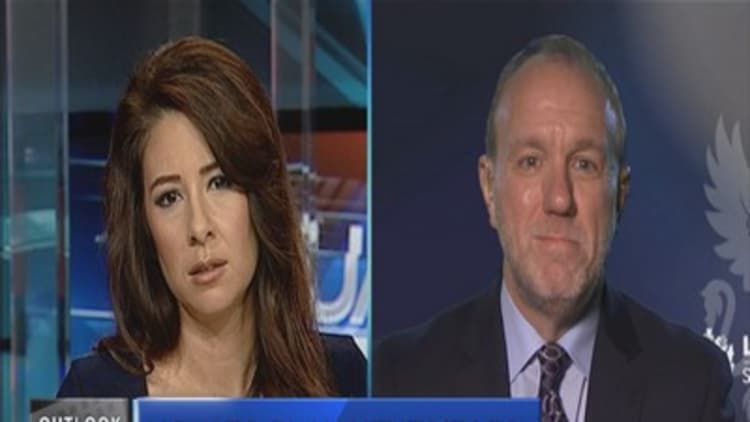
Portfolio Investors should rotate out of "overvalued" U.S. equities next year as the effects of full employment begin to take their toll on the country's economy, according to Jim Paulsen, chief investment strategist at Wells Fargo Asset Management.
"The United States is a crowded trade, it's over-owned in the world relative to international markets," he told CNBC Tuesday.
"I would be mainly weighted in equities away from the United States. Because, I think the United States is in a unique position in the world, almost, in the sense that it's reached full employment, it's going to face some full employment pressures like wage and price pressures."
Paulsen's - speaking to CNBC ahead of presenting his 2016 outlook to clients in London - iterated that investors don't need to "entirely" revert away from U.S. stocks but should instead hold a majority of foreign assets.
Other analysts are less bearish on U.S. stocks, with closely followed investor Dennis Gartman telling CNBC last month that traders were "still in a bull market" for equities until the "trend lines were broken." Beat Wittmann, a partner at financial adviser Porta Advisors, also told CNBC last month that a Fed rate hike wouldn't spoil a rally that would continue into the new year.
The has added just over 1 percent so far in 2015, while the Euro Stoxx 600 benchmark has climbed 12.5 percent. The move underlines a trend of stalling U.S. markets after six or seven years of gains since the global financial crash.
It also comes at a time when the U.S. central bank is looking to normalize its interest rate policy while others - notably in Europe and Japan - are hinting at the possibility of more aggressive bond-buying in global debt markets.
With this divergence in central bank policy, many strategists are predicting the U.S. dollar could rise as investors bring their money home in the hope of a higher yield. However, Paulsen predicts that the greenback may have already seen a peak and will trend lower in 2016. He believes that stimulus around the world will help to lift global growth - and consequently help lift foreign currencies.
"I think what we're going to get is a bounce in global growth, leading to stabilization in commodity prices and we're going to get a weaker dollar in 2016 with foreign currencies doing better," he said.
He added that the U.S. economy is in "great shape, including consumer spending" but highlighted that it was currently experiencing a "very severe recession" in the energy, mining, materials and manufacturing industries.
"I find it hard to believe that the retail season here - end of the year - won't turn out to be pretty good when the job market is as strong as it is in the United States," he said.




